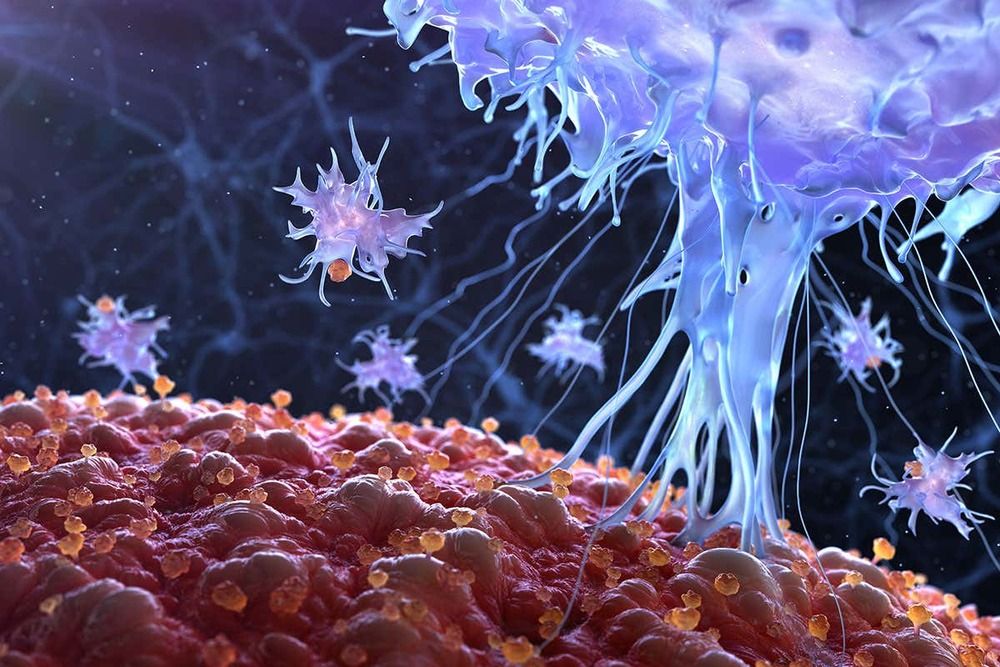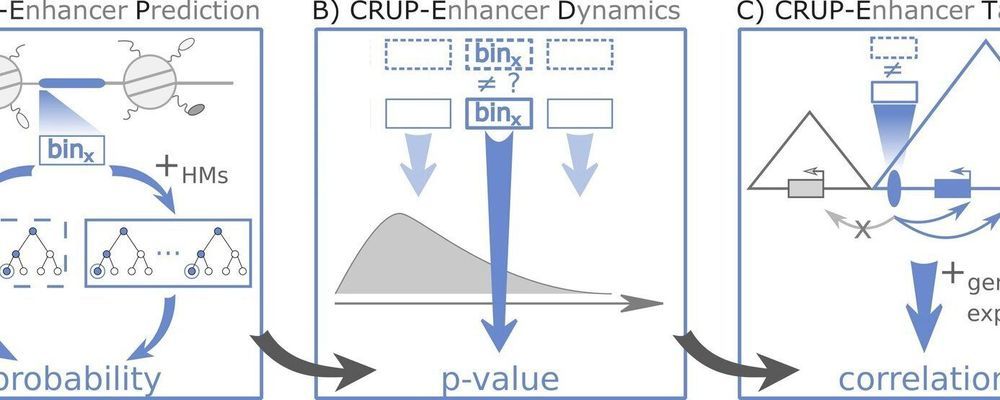We’ve long known that viruses can target cancers in our bodies. Now, thanks to gene editing, we’re using them as tumour search and destroy agents – and getting our immune systems to join the fight too.



It has long been understood, and by cultures too various to list, that salamanders have something of the supernatural about them. Their name is thought to derive from an ancient Persian vocable meaning ‘fire within’, and for at least 2,000 years they were believed to be impervious to flames, or even capable of extinguishing them on contact. Aristotle recorded this exceptional characteristic, as did Leonardo da Vinci. The Talmud advises that smearing salamander blood on your skin will confer inflammability. Not so. But the intuition that salamanders possess fantastical powers is not unfounded.
Like earthbound immortals, salamanders regenerate. If you cut off a salamander’s tail, or its arm, or its leg, or portions of any of these, it will not form a stump or a scar but will instead replace the lost appendage with a perfect new one, an intricacy of muscle, nerve, bone and the rest. It will sprout like a sapling. Science has been chopping up salamanders for more than 200 years with the aim of simply understanding the mechanics of their marvels, but more recently with the additional aim of someday replicating those marvels in ourselves. Might salamanders be the great hope of regenerative medicine?
The salamander in which regeneration is most often studied is an odd and endearingly unattractive Mexican species known as the axolotl. In addition to its limbs and extremities, the axolotl is known to regrow its lower jaw, its retinae, ovaries, kidneys, heart, rudimentary lungs, spinal cord, and large chunks of its brain. It heals all sorts of wounds without scarring. The axolotl also integrates the body parts of its fellows as if they were its own, without the usual immune response, and this peculiar trait has facilitated some of the more grotesque disfigurements it’s endured in the name of science. In experiments after the Second World War, East German scientists grafted small axolotls crosswise through the backs of larger ones. The animals’ circulatory systems came to be linked, and the researchers hailed the conjoined mutants as triumphs of collectivism.

Regular fasting is associated with lower rates of heart failure and a longer life span, according to two new studies.
Researchers sought to shed new light on the centuries-old debate about how fasting affects health. Recent studies have shown it contributes to reductions in blood pressure, “bad” LDL cholesterol and insulin resistance, a condition that can raise blood sugar. A 2017 study showed alternate-day fasting was as effective as daily calorie restriction for losing weight and keeping the pounds off.
The new studies focused on data from patients evaluated for heart disease in Utah and other Rocky Mountain states. The research included hundreds of members of The Church of Jesus Christ of Latter-day Saints, also known as Mormons, who typically fast one Sunday each month, for up to 24 hours.

Boosting brain function is key to staving off the effects of aging. And if there was one thing every person should consider doing right now to keep their brain young, it is to add extra virgin olive oil (EVOO) to their diet, according to research by scientists at the Lewis Katz School of Medicine at Temple University (LKSOM). EVOO is a superfood, rich in cell-protecting antioxidants and known for its multiple health benefits, including helping put the brakes on diseases linked to aging, most notably cardiovascular disease. Previous LKSOM research on mice also showed that EVOO preserves memory and protects the brain against Alzheimer’s disease.
In a new study in mice published online in the journal Aging Cell, LKSOM scientists show that yet another group of aging-related diseases can be added to that list—tauopathies, which are characterized by the gradual buildup of an abnormal form of a protein called tau in the brain. This process leads to a decline in mental function, or dementia. The findings are the first to suggest that EVOO can defend against a specific type of mental decline linked to tauopathy known as frontotemporal dementia.
Alzheimer’s disease is itself one form of dementia. It primarily affects the hippocampus—the memory storage center in the brain. Frontotemporal dementia affects the areas of the brain near the forehead and ears. Symptoms typically emerge between ages 40 and 65 and include changes in personality and behavior, difficulties with language and writing, and eventual deterioration of memory and ability to learn from prior experience.

According to the World Health Organization, CBD “is generally well-tolerated with a good safety profile,” but it’s not for everyone. CBD or cannabis-derived medicines can have contraindications with other drugs and can have side effects. A 2017 review of CBD studies said the most commonly reported are fatigue, diarrhea, and appetite or weight changes.
CBD is often touted as a cure-all, but that’s not the whole story. Learn everything you need to know about how CBD works—and how it doesn’t—here.

Alcor calls them “patients”, and right now, over 150 of these frozen souls are waiting for the future in vats of liquid nitrogen stored in Scottsdale, Arizona. We interview Dr. Ralph Merkle, a director at the Alcor Foundation and a respected pioneer in nanotechnology, to learn how recent advances in cryonics just may enable long-haul interstellar spaceflight sooner than you’d guess…

In the future, you could 3D print organ replacements and biological tissues anywhere you want!

It is the dream of every molecular geneticist: an easy-to-use program that compares datasets from different cellular conditions, identifies enhancer regions and then assigns them to their target genes. A research team led by Martin Vingron at the Max Planck Institute for Molecular Genetics in Berlin has now developed a program that does all of this.
“DNA is pretty boring, since it is practically the same in every cell,” says Martin Vingron, director and head of the Department of Bioinformatics at the Max Planck Institute for Molecular Genetics in Berlin. “While the genome is like the book of life, I am most interested in the side notes.”
These “notes” are small chemical marks attached to the DNA molecule that do not alter the genetic information itself, but influence what happens to the DNA at the respective site. In other words, these marks have an epigenetic effect. They serve as regulators of genomic regions that are responsible for the activation and deactivation of genes, such as promoters and enhancers.

It’s easy to get excited about breast milk. Just the basic fact that a woman can eat food and turn it into a complete food instantly tailored to grow that particular newborn is quite outstanding. But there is more to breast milk than what meets the eye and understanding the perfection of it could mean a better life for premature babies.
For starters, when a baby suckles her mama’s breast, a vacuum is created. That’s right. Saliva in, milk out. The infant’s saliva is sucked back into the mother’s nipple, where receptors in her mammary gland read its signals. Katie Hinde, a biologist and associate professor at the Center for Evolution and Medicine at the School of Human Evolution & Social Change at Arizona State University, calls this “baby spit backwash,” and it contains information about the baby’s immune status. As far as scientists can tell, baby spit backwash is one of the ways that breast milk adjusts its immunological composition. When mammary gland receptors detect the presence of pathogens, the mother’s body produces antibodies to fight it, and those antibodies travel through breast milk back into the baby’s body, where they target the infection.
“[Breast] Milk is so incredibly dynamic,” says Hinde. “There are hormones in breast milk, and they reflect the hormones in the mother’s circulation. The ones that help facilitate sleep or waking up are present in your milk. And day milk is going to have a completely different hormonal milieu than night milk.” That broken-down means that breastmilk made at night contains hormones that help your baby sleep.